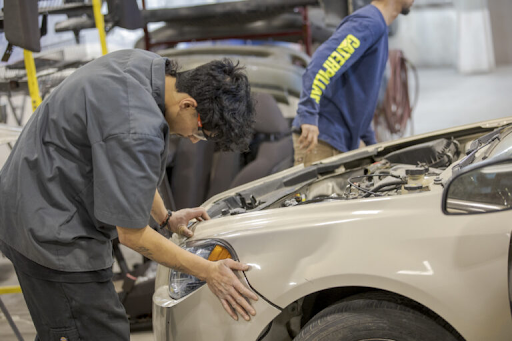Navigating Auto Collision Repair: A Comprehensive Guide to Getting Your Car Back on the Road

Auto collision can be stressful, not just due to the immediate aftermath but also because of the repair process. Understanding the auto collision repair process can help alleviate some of this stress and ensure that your vehicle is restored to its optimal condition. This comprehensive guide provides valuable insights into navigating auto collision repair, ensuring you get back on the road with confidence.
1. Understanding the Auto Collision Repair Process
The auto collision repair process involves several key stages, each crucial to restoring your vehicle. This process typically includes:
- Assessment and Estimation: After an accident, the first step is to have your vehicle assessed by a professional. This involves inspecting the damage and providing an estimate for the repairs. Many auto collision repair shops use advanced technology to assess the extent of the damage accurately.
- Insurance Coordination: Once the estimate is prepared, it is essential to coordinate with your insurance provider. The insurance company will review the estimate and may suggest an approved repair shop. Understanding your policy’s coverage for collision repairs can help streamline this process.
- Repair and Restoration: The actual repair work begins once the insurance approval is obtained. This stage involves disassembling the damaged parts, repairing or replacing them, and ensuring that the vehicle’s structural integrity is restored. Advanced techniques and parts are often used to ensure the repairs meet industry standards.
- Quality Control and Final Inspection: Before delivering the vehicle back to you, a thorough inspection is conducted to ensure all repairs are completed to a high standard. This includes checking for proper alignment, paint quality, and functionality of all components.
2. Choosing the Right Auto Collision Repair Shop
Selecting a reputable auto collision repair shop is crucial to ensure quality repairs. Here are some factors to consider when making your choice:
- Certifications and Accreditations: Look for repair shops that are certified by organizations such as the National Institute for Automotive Service Excellence (ASE) or those recognized by the manufacturers. These certifications indicate that the shop meets industry standards.
- Reputation and Reviews: Research the shop’s reputation by reading customer reviews and seeking recommendations. A shop with a solid reputation is more likely to provide reliable and high-quality repairs.
- Experience and Specialization: Consider the shop’s experience and specialization in auto collision repair. Shops with extensive experience in handling specific types of repairs or vehicles may offer better results.
- Warranty on Repairs: A reputable shop should offer a warranty on their repairs. This provides peace of mind, knowing that any issues arising from the repair work will be addressed without additional cost.
3. What to Expect During the Repair Process
Understanding what to expect during the auto collision repair process can help you stay informed and manage your expectations effectively:
- Timeframe: The duration of the repair process can vary depending on the extent of the damage and the shop’s workload. Minor repairs may take a few days, while extensive damage might require several weeks. The repair shop should provide an estimated completion date.
- Communication: Regular updates from the repair shop are essential. Ensure that the shop communicates any changes or issues that arise during the repair process. This helps in keeping you informed and managing any potential delays.
- Costs and Payments: While insurance often covers the cost of repairs, you may be responsible for deductibles or costs not covered by your policy. Clarify the payment terms and any out-of-pocket expenses with both the repair shop and your insurance provider.
4. Post-Repair Considerations
Once your vehicle is repaired, there are a few final steps to ensure everything is in order:
- Post-Repair Inspection: Conduct a thorough inspection of your vehicle to ensure that all repairs have been completed satisfactorily. Check for any discrepancies in the repair work or issues with the vehicle’s performance.
- Test Drive: Take your vehicle for a test drive to assess its handling and functionality. This helps in identifying any issues that may not have been apparent during the inspection.
- Follow-Up: If you notice any problems after the repair, contact the shop immediately. Most reputable shops will address any issues promptly as part of their customer service.
Conclusion
Navigating the auto collision repair process can seem overwhelming, but understanding each step can make it more manageable. From selecting the right repair shop to ensuring that all aspects of the repair are handled properly, being informed will help you achieve a smooth and efficient repair experience. By following this comprehensive guide, you can confidently get your car back on the road and ensure it remains in top condition.








